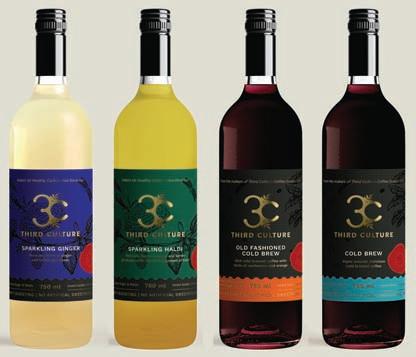H E A LT H & S A F E T Y
What is on my Table? T
o ensure the supply of ever growing demand for varied food products by consumers, the stores are now stocking much wider range of products than ever before. With the greater awareness among consumers to differentiate paleo from keto, and vegetarian or organic products, healthy ingredients, culinary experts are constantly innovating cuisine to satisfy their palate. But the multiplicity of choices and explosion of information has led the modern consumer to face a serious dilemma of food traceability. One simply doesn’t know where the food comes from. Consumers have become just as interested about what’s printed outside the package, as are about what’s inside it. Food packaging labels are not just about manufacturing & expiry date, they’re covered in fine print that attempts to tell little bit more about what one is about to consume.
Food Traceability Food traceability helps in understanding the movement of a food product and its ingredients through all steps in the supply chain, both backward and forward. Traceability involves documenting and linking the production, processing, and distribution chain of food products and ingredients. Food traceability is defined as the highest possibility of historical tracking of food products such as raw and semi finished items which are able to ensure all the finished products are safe for consumption. If there is any untoward incident involving food like foodborne illness outbreak or contamination event, efficient product tracing helps agencies and those who produce and sell food to rapidly find the source of the product and where contamination may have occurred. This enables faster removal of the affected product from the marketplace,
50
reducing incidences of foodborne illnesses. Thus vendor-neutral technologies & open standards that allow track & trace across food supply chains are required to be adopted by food businesses to mitigate risks and undertake effective product recalls.
Ensure Food Safety With rising incidences of unsafe food in global supply chains, food safety has become critical for both businesses and consumers. Worldwide, the role of traceability as a means of enabling food safety is being increasingly acknowledged by industry and regulatory bodies. Factors that contribute to potential h a z a rd s i n fo o d s i n c l u d e i m p ro p e r agricultural practices; poor hygiene at any stage of the food chain; lack of preventive controls in food production, processing or preparation operations; misuse of chemicals or food additives; use of contaminated raw materials, ingredients or water; inadequate or improper storage; chemical contaminants, including biological toxins; food fraud and economically motivated adulteration; etc. A n effe ct i ve way to s to p fo o d contamination completely, F&B companies can significantly lower the risk with an effective food traceability system. While everyone in the industry is responsible in ensuring that food products are safe for public consumption, a comprehensive food traceability system will provide trust amongst the people The traceability of the food sector has become a priority. It is essential to provide transparency and security to consumers who are demanding healthier products with a higher quality and the best nutritional characteristics. But it is also important for producers, because it ensures the quality of the raw material which is introduced into the food chain, allowing certification and accreditation of
Hammer Food & Beverage Business Review
their products, quickly locating problematic items, and implementing control systems, preventing fraud and unfair competition between producers. By using food traceability, businesses can identify any product’s current location. Besides that, will be able to record, verify, and track each product’s entire history through the supply chain. If an issue arises in supply chain, the tracking system enables tracing back the particular issue originated from.
Consumer Awareness D a t a f ro m W H O s u g g e s t s t h a t a n estimated 600 million fall ill after eating contaminated food every year. Of this, a whopping 420,000 people die every year due to food-related illnesses. Since consumers cannot know in detail what processing steps are executed in the production of food and what ingredients or resources are used in these steps, they want to be assured that food products are safe, healthy, sustainable, and of high and consistent quality. Consumers care about what they eat, how their food is produced, and the impact that food production and consumption have on the environment and society. Consumers’ concerns about the methods of food production (organic, inorganic, and genetically modified) and the conditions under which the food is grown have also increased in the last decade. Today, consumers are more concern about the actual product's nutrients facts and as well the whole process of the product. Therefore, every Food & Beverages manufactures should pay more attention on the information such as processing m et h o d s , p a c ka g i n g , t ra n s p o rtat i o n logistics, certificates & as well as quality of each ingredient. Food traceability is increasingly becoming
Feb-Mar ’21















